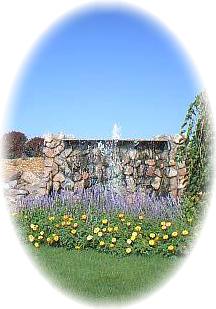Kearney, Nebraska

Because of its location, 1,733 miles from Boston and 1,733 miles from San Francisco, Kearney has been called, "Midway City of the Nation." Its newspaper, "Kearney Daily Hub," established in 1888, was named with visions of becoming the hub of the nation.
Westward travel on the Oregon, Mormon, and California Trails had reached such proportions by 1848 that Fort Kearny, southeast of the present city, was established to protect travelers on the trails.
A town was laid out by W.W. Patterson, representing Smith, agent for the land company, Moses Sydenham, who had been postmaster at Fort Kearny, and the Rev.Asbury Collins, a Methodist minister. It was not until the Burlington & Missouri River Railroad, which ran south of the Platte River, connected with the U.P. line at that point, that "Kearney Junction" came into being. When it was formally incorporated in 1873, the word "Junction" was dropped and it became the "City of Kearney."
The town, like the fort, was named for Gen. Stephen Watts Kearny, known for his distinguished military service in the Mexican War. When application was made for a post office at the Fort in 1857, the name was misspelled, with an extra "e" added. The town has retained that spelling, but the fort later corrected it in their records.
"A Minneapolis of the West," said Col.W.W. Patterson, Kearney's chief promoter. The prairie town mushroomed into a metropolis almost overnight. By 1890 Kearney had the first all-electric street railway system in Nebraska and the first west of the Mississippi River (except St.Louis), plus electricity for its homes, streets, churches, and industry. Impressive business and public buildings were built, including a five-story opera house and a city hall with clock tower. A unique factory for this city on the plains was a cotton mill that operated for ten years, manufacturing cotton sheeting.
Today, Kearney's attractions include historic homes, fine parks with recreational facilities, libraries, museums, and art galleries. The city is the home of the largest collection of Cornhusker State art, at the Museum of Nebraska Art. Relive pioneer ways at Fort Kearny State Historical Park; pint-size fun can be found at the Children's Museum. On summer afternoons, you can tour the Frank House, a mansion built in 1889 and adorned with a Tiffany stained-glass window.
Sandhill cranes draw a spring croud here. Over 500,000 cranes and other waterfowl feed in the shallows of the Platte River and Rainwater Basin. Observatories are stationed along the river that allow the public to watch this magnificent migration that has continued for millions of years.
